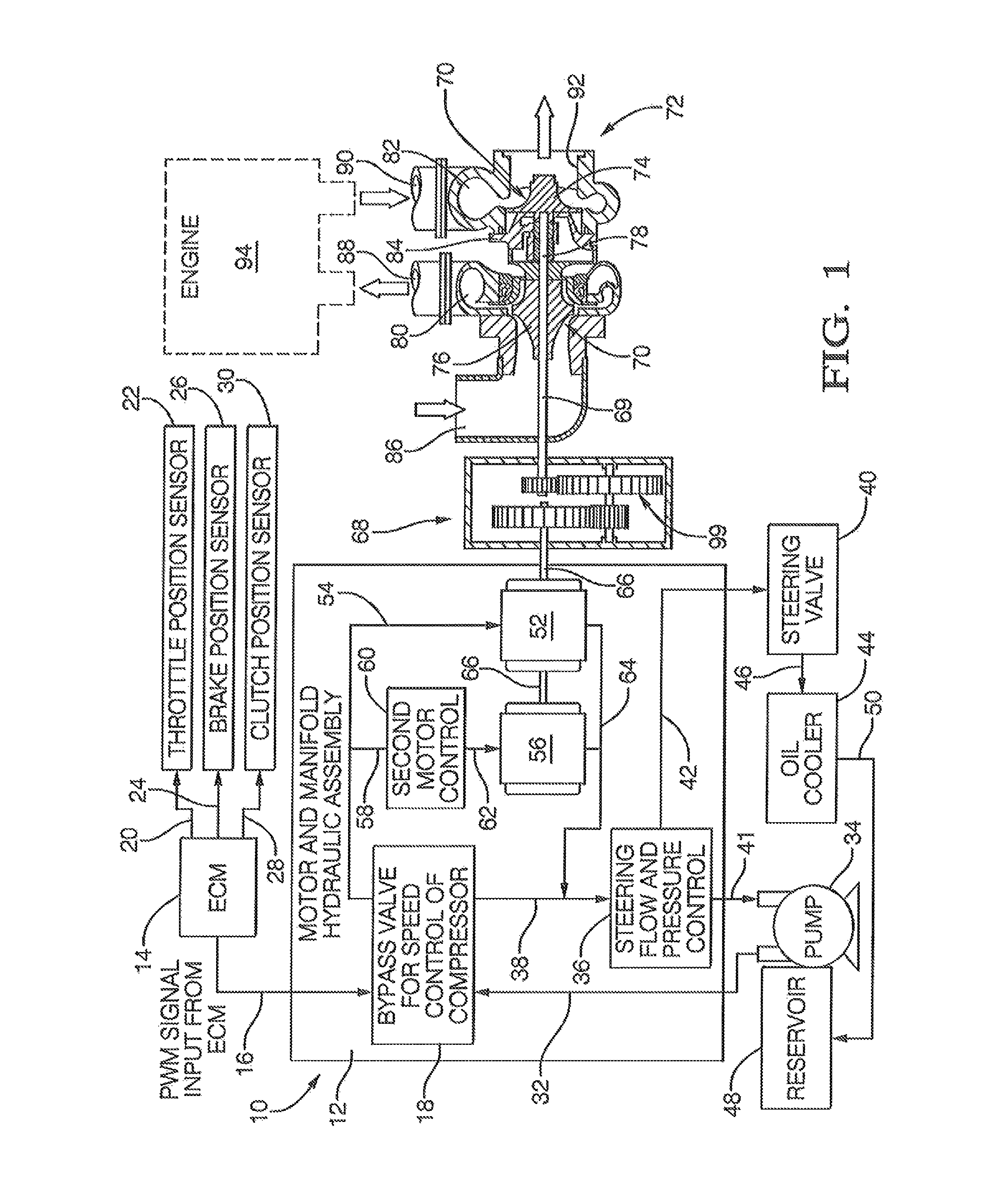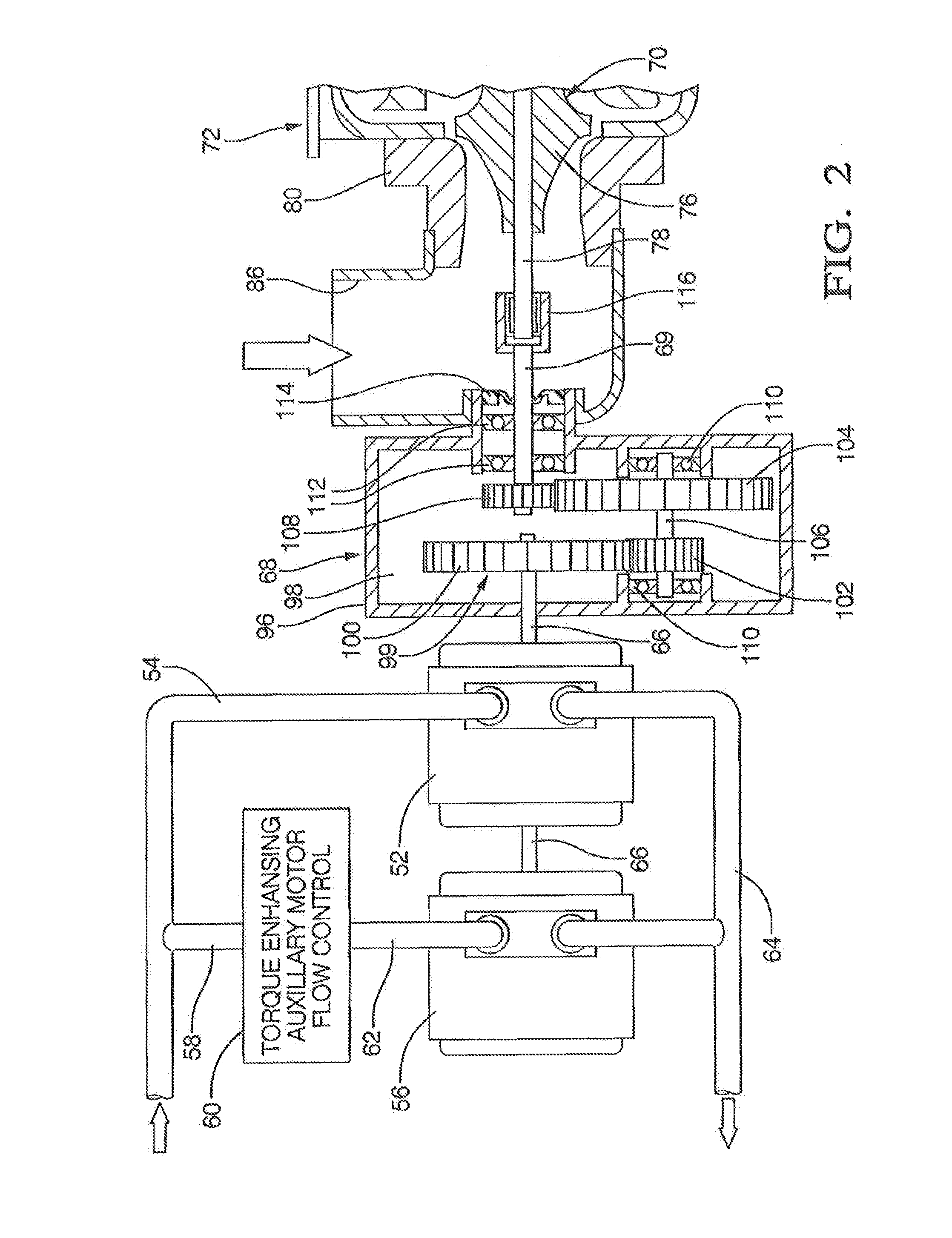Hydraulic turbo accelerator apparatus
a technology of accelerator apparatus and hydraulic engine, which is applied in the direction of combustion engines, machines/engines, internal combustion piston engines, etc., can solve the problems of excessive pressure or boost created by the spinning impeller, relative poor angular acceleration, and excessive belt load
- Summary
- Abstract
- Description
- Claims
- Application Information
AI Technical Summary
Benefits of technology
Problems solved by technology
Method used
Image
Examples
Embodiment Construction
[0042]The present invention is identified by the applicant as a HydraCharger™ or forced air induction system, which re-deploys existing automotive radiator fan drive technology. The forced air induction system is cost effective and easily adaptable for a wide range of vehicle applications. The system is electronically controlled, hydraulically powered and remotely mounted for easy packaging. Independence from the vehicle engine and exhaust reduces vehicle level costs and avoids adverse emissions issues.
[0043]The present invention provides supercharger response on electronic command. The forced air induction system's variable positive displacement hydraulic drive delivers full torque virtually instantaneously upon command from an associated electronic control module (ECM). This accelerates a reliable, efficient and low cost centrifugal compressor to a speed required to create boost in under 300 ms. At low throttle demand, the engine returns to naturally aspirated mode through the unp...
PUM
 Login to View More
Login to View More Abstract
Description
Claims
Application Information
 Login to View More
Login to View More - R&D
- Intellectual Property
- Life Sciences
- Materials
- Tech Scout
- Unparalleled Data Quality
- Higher Quality Content
- 60% Fewer Hallucinations
Browse by: Latest US Patents, China's latest patents, Technical Efficacy Thesaurus, Application Domain, Technology Topic, Popular Technical Reports.
© 2025 PatSnap. All rights reserved.Legal|Privacy policy|Modern Slavery Act Transparency Statement|Sitemap|About US| Contact US: help@patsnap.com



